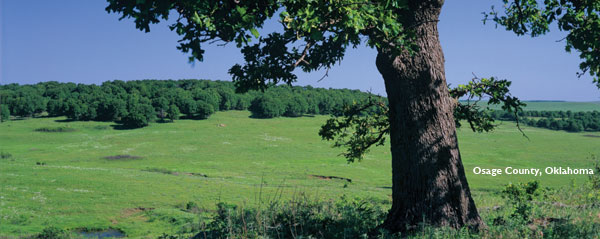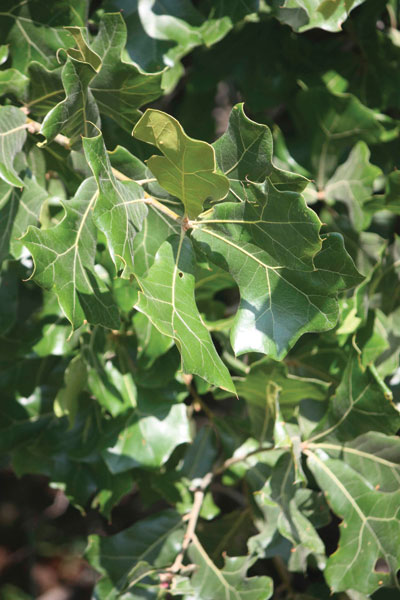|
back Home Cross TimbersGateway from forest to prairie Biodiversity of Oklahoma series |
|
Blackjack Oak
Quercus marilandica
|
© Bruce Hoagland, Oklahoma Natural Heritage Inventory
|
Family: Fagaceae (oaks and beeches) Small or medium-sized tree to 18 m (60 ft) tall and 30 cm (12 in) diameter. Bark thick, blackish and divided into rectangular scaly blocks. Leaves 10-25 cm (4-10 in) long, broadly obovate or obovate-oblong, tapering to rounded or cordate broad base, usually shallowly 3-lobed, scurfy-pubescent below and shiny-glabrous above, 10-20 cm (4-8 in) wide across the lateral lobes. Acorn cup turbinate or turbinate-hemispheric, 1.5-2 cm (0.6-0.8 in) diameter. Branches persistent on the tree for many years after they die, resulting in the formation of almost impenetrable thickets in portions of the Cross Timbers. Distribution: The species is found from the Gulf Coast north to New Jersey, west to southern Illinois and southeast Nebraska. Habitat: Dry uplands, particularly in sandy or rocky soil. Comment: Blackjack is a major component of the Cross Timbers vegetation type of Oklahoma, Kansas, and Texas. The wood is hard and heavy but the trees are usually small and gnarled. It is extensively used for firewood in Oklahoma and Texas. Quercus is the ancient classical name for the European oaks; marilandica refers to the state of Maryland. From the Catalog of the Woody Plants of Oklahoma by Johnson & Hoagland. |
|
back to species list |
PDF of all species profiles
|

